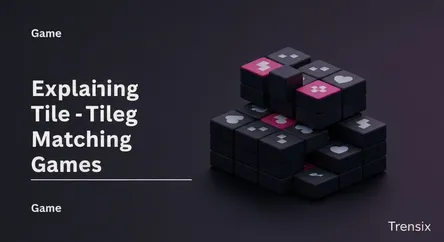Game
Explaining Tile Matching Games

Discover tile matching, the addictive puzzle mechanic in hits like Candy Crush. Learn why these simple yet strategic games dominate casual gaming.
What is it?
Tile matching is a core gameplay mechanic found in many puzzle video games. The objective is for players to manipulate tiles on a grid to create matches based on specific criteria, such as color, shape, or symbol. Once a match is made—often three or more in a row—the tiles are cleared from the board, and new ones fall into place. Classic examples range from Mahjong Solitaire to modern hits like Bejeweled and Candy Crush Saga. The core loop is simple: identify patterns, swap or move tiles, and clear the board to achieve a high score or complete level-specific goals.
Why is it trending?
The mechanic's popularity exploded with the rise of smartphones. Tile-matching games are perfectly suited for touchscreens, offering intuitive tap-and-swipe controls that are easy for anyone to learn. Their short, level-based structure makes them ideal for quick play sessions, like during a commute. Developers enhance the experience with satisfying sounds, vibrant visual effects, and a steady stream of new content, creating a highly polished and endlessly replayable loop that keeps players engaged.
How does it affect people?
For many, tile-matching games provide a relaxing escape. The process of creating order from chaos and clearing the board can be meditative and satisfying, offering a quick sense of accomplishment and a small dopamine hit. This can serve as a mental break or a way to de-stress. However, the mechanic is often designed to be highly compelling. The constant rewards and 'near-miss' situations can lead to addictive behavior, encouraging players to spend more time and, in some cases, money on in-app purchases to progress.